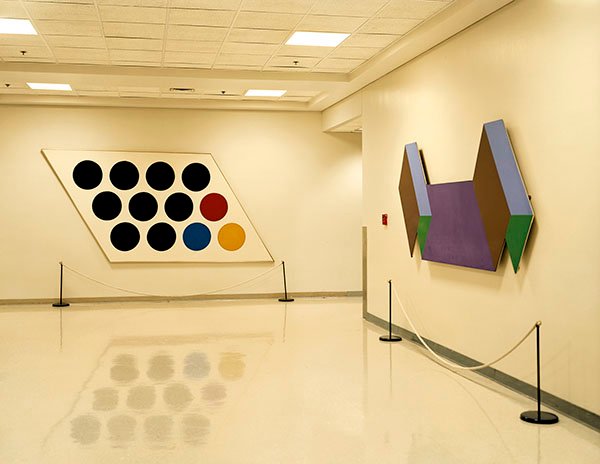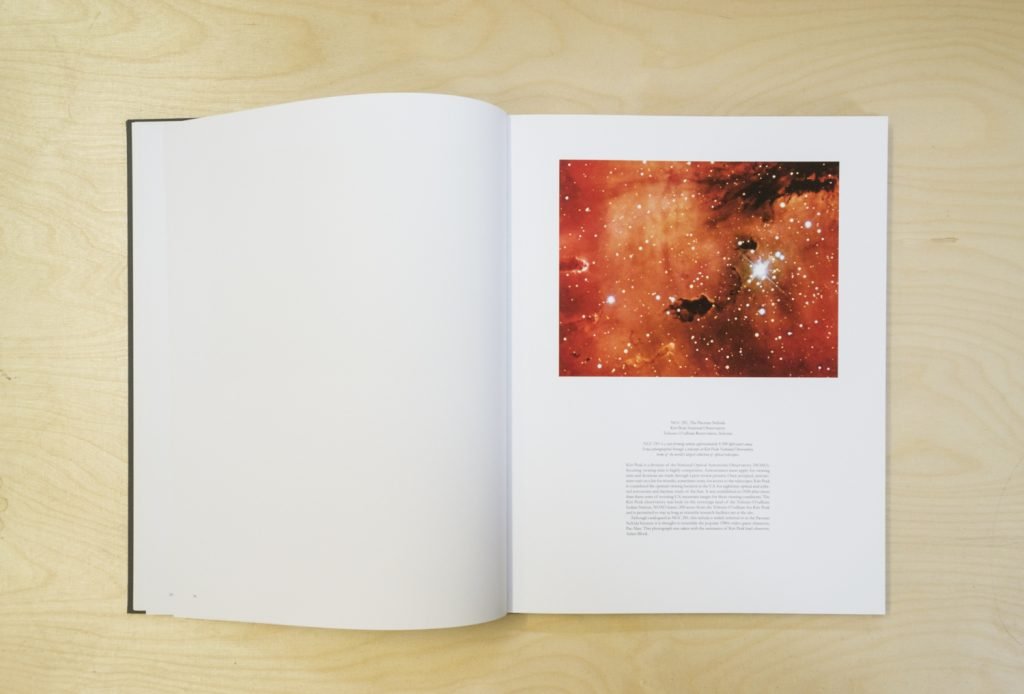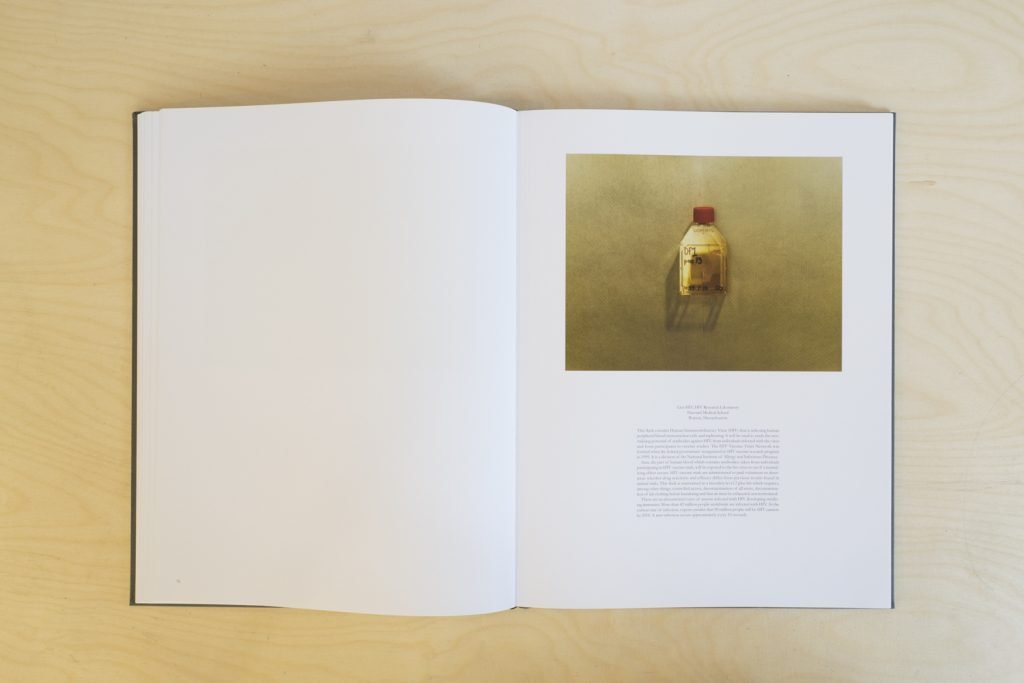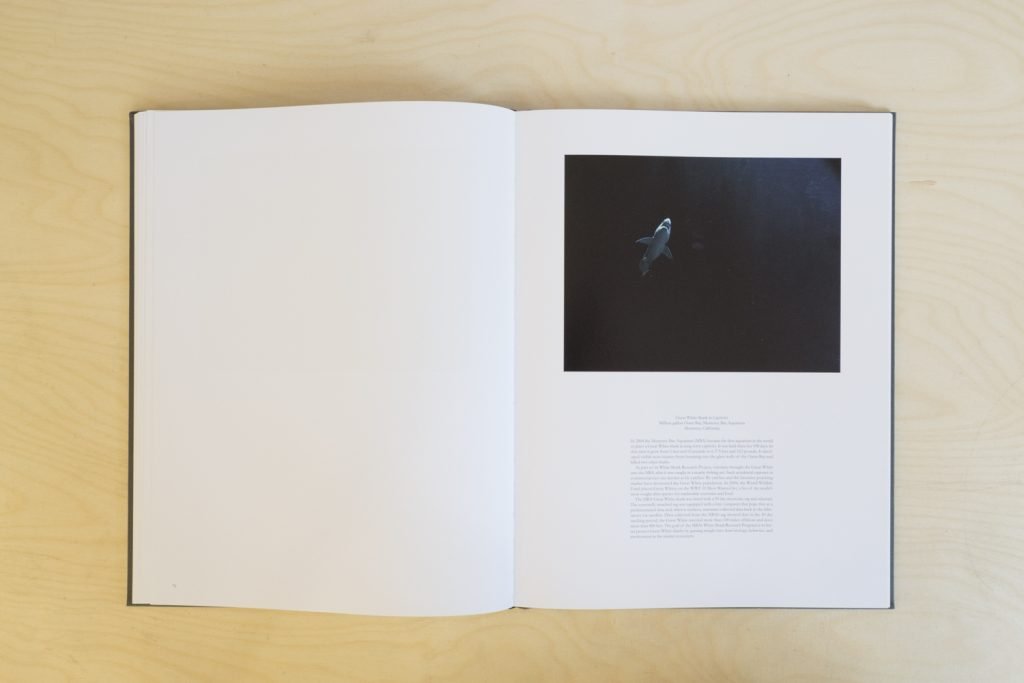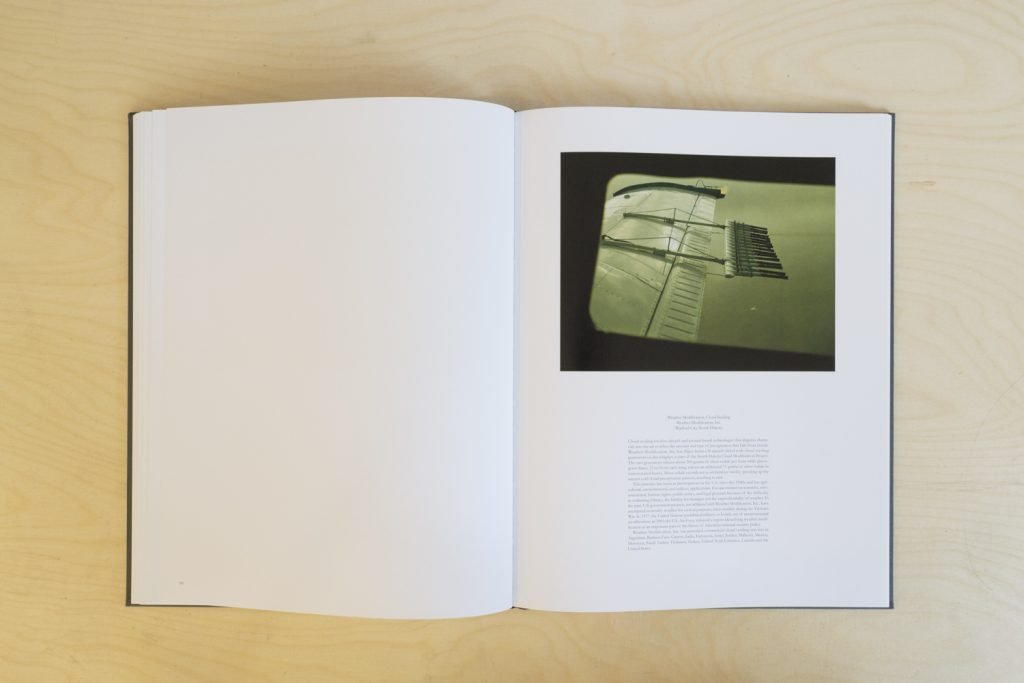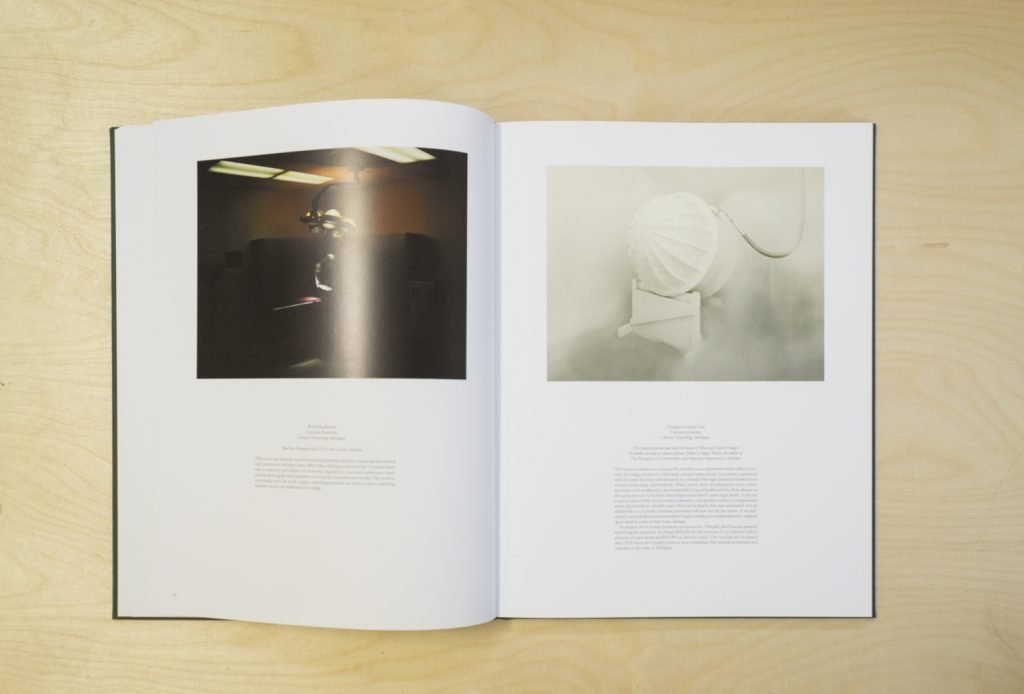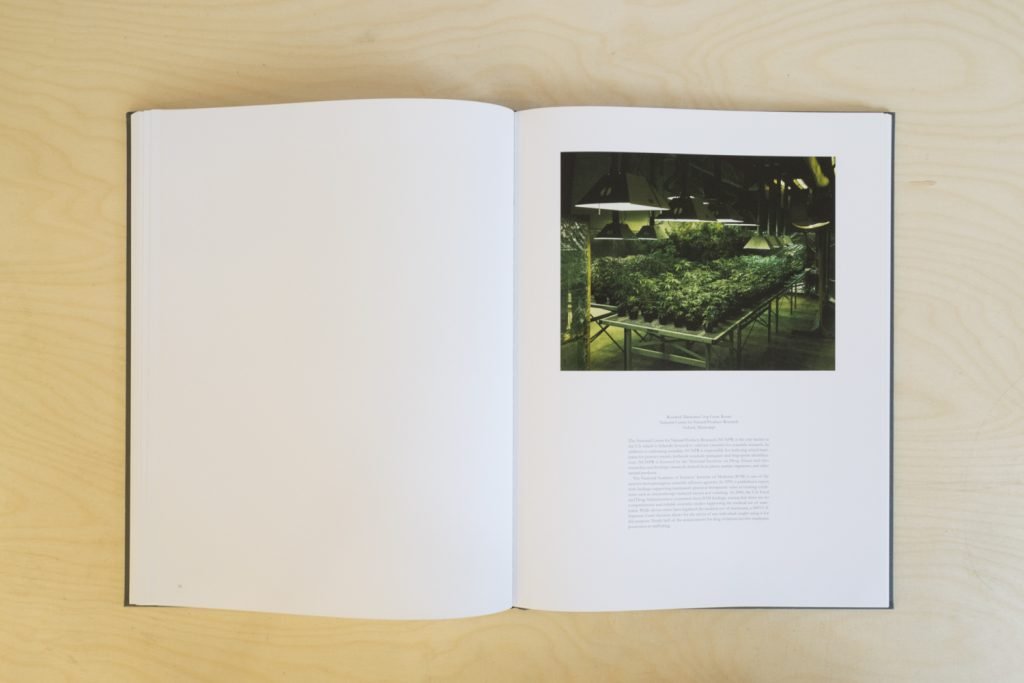TARYN SIMON
An American Index of the Hidden and Unfamiliar
Publisher: Hatje Cantz
text by: Matteo Cremonesi
“Too often the American people don’t know who Washington is working for, and when they find out, they don’t like what they hear. We’re not going to be able to change America unless we challenge the culture that has dominated Washington for far too long. And that means shining a bright light on how Washington works.”
(excerpt from Barack Obama’s “Restoring Trust in Government and Improving Transparency” speech, New Hampshire, April 9, 2007)
In “An American Index of the Hidden and Unfamiliar”, Taryn Simon does a taxonomic work by making an inventory of what is hidden and out of sight within the borders of the United States. Simon’s work explores and observes American culture through the documentation of subjects from the most disparate sectors of the cultural production of this civilization, intercepting transversal elements in discipline and sectors such as: science, government, medicine, entertainment, nature, safety and religion . By highlighting a division between what is easily accessible and what is not, Taryn Simon declares what is most profound and “esoteric” in the foundation, mythology and daily life of the United States of America.
The invisible subjects photographed by the author range from radioactive capsules in a nuclear waste warehouse to a hibernating black bear at the CIA art collection. Taryn Simon said he “wanted to tackle the gap between public and expert access.”
A purpose – that of the author – capable of outlining, by indicating precisely this gap between public and private access, the complex political and cultural nature of American society and political narrative. A society whose ethical system regarding community and welfare policies (education, health) differs from the one generally experienced in European states.
The book is made up of 70 color boards and a preface by Salman Rushdie. Ronald Dworkin wrote a comment, while curators Elisabeth Sussman and Tina Kukielski from the Whitney Museum of American Art an introduction. An American Index of the Hidden and Unfamiliar was published by Steidl and exhibited at the Whitney Museum of American Art in 2006. In 2007 the project was exhibited at the Museum fur Moderne Kunst in Frankfurt, Germany.
The patient in this photograph is 21 years old. She is of Palestinian descent and living in the United States. In order to adhere to cultural and familial expectations regarding her virginity and marriage, she underwent hymenoplasty. Without it she feared she would be rejected by her future husband and bring shame upon her family. She flew in secret to Florida where the operation was performed by Dr. Bernard Stern, a plastic surgeon she located on the internet. The purpose of hymenoplasty is to reconstruct a ruptured hymen, the membrane which partially covers the opening of the vagina. It is an outpatient procedure which takes approximately 30 minutes and can be done under local or intravenous anesthesia.
The hymen has not been proven to serve any biological function. Some girls are born with an imperforate hymen. Rupture most often occurs during first intercourse, but some girls tear their hymen during sports activities or as a result of injuries. The majority of the time there is a correlation between an intact hymen and a woman’s virginity; many cultures view the tearing of the hymen as a critical symbol of that loss. While similar attempts to alter the hymen predate modern plastic surgery, hymenoplasty is now just one of several vaginal cosmetic surgeries that are growing in popularity worldwide. Dr. Stern charges $3,500 for hymenoplasty. He also performs labiaplasty and vaginal rejuvenation.
Submerged in a pool of water at Hanford Site are 1,936 stainless steel nuclear waste capsules containing cesium and strontium. Combined, they contain over 120 million curies of radioactivity. It is estimated to be the most curies under one roof in the United States. The blue glow is created by the Cherenkov Effect or Cherenkov radiation. The Cherenkov Effect describes the electromagnetic radiation emitted when a charged particle, giving off energy, moves faster than light through a transparent medium. The temperatures of the capsules are as high as 330 degrees Fahrenheit. The pool of water serves as a shield against radiation; a human standing one foot from an unshielded capsule would receive a lethal dose of radiation in less than 10 seconds. Hanford is a 586 square mile former plutonium production complex. It was built for the Manhattan Project, the U.S.-led World War II defense effort that developed the first nuclear weapons. Hanford plutonium was used in the atomic bomb dropped on Nagasaki in 1945. For decades afterwards Hanford manufactured nuclear materials for use in bombs. At Hanford there are more than 53 million gallons of radioactive and chemically hazardous liquid waste, 2,300 tons of spent nuclear fuel, nearly 18 metric tons of plutonium-bearing materials and about 80 square miles of contaminated groundwater. It is among the most contaminated sites in the United States.
Following the hot forging and cutting stages of production, the frame of a revolver is transferred to the finishing department where it is de-burred, polished and blued. In the final assembly area, a barrel, cylinder and internal lock are hand fitted into the revolver.
Smith & Wesson is the leading manufacturer of handguns in the United States. The company works with law enforcement and government agencies including NYPD, Atlanta PD, Las Vegas Metro PD and the U.S. military, which recently purchased Smith & Wesson’s Sigma series 9mm pistol for use in Afghanistan.
The Second Amendment of the U.S. Constitution declares: “A well regulated Militia, being necessary to the security of a free State, the right of the people to keep and bear Arms, shall not be infringed.” The National Rifle Association Institute for Legislative Action currently estimates that there are well over 200 million privately owned firearms in the United States. Handguns account for upwards of 70 million of that number. The .44 Magnum was popularized by actor Clint Eastwood in the 1971 movie Dirty Harry.
Lucasfilm Archives was built in 1991 to preserve the artifacts used in the making of writer, director and producer George Lucas’s films. The collection, housed at Skywalker Ranch, includes props, costumes and set pieces from some of the highest grossing films in the history of cinema, including the Star Wars and Indiana Jones franchises. 95 percent of Skywalker Ranch is subject to a deed of gift to Marin Agricultural Land Trust and dedicated to open space.
In Star Wars: Episode VI Return of the Jedi, Death Star II is seen as a mirror image (flipped). Here it is pictured in its true orientation. Death Star II measures 51 x 27 x 51in. and has a painted acrylic façade with photo-etched brass detailing. Within the context of the films, Death Star II is a deep space battle station used by the Galactic Empire measuring 160 kilometers in diameter, outfitted with turbolasers, tractor beams and a superlaser which has the ability to annihilate planets and civilizations. The original Death Star was destroyed by Luke Skywalker in Star Wars: Episode IV A New Hope. Despite vastly improved shielding and targeting systems, the second Death Star was also destroyed, by Lando Calrissian and his co-pilot.
Director of Jury Consultation, David Klein, and Vice President of Jury Consulting, James Dobson, monitor and analyze mock trial proceedings and jury deliberations in order to assist their clients in developing effective trial strategies.
Mock juries are an important part of litigation consulting, a little-known professional field with annual profits of approximately $3 billion. DOAR’s jury simulations offer attorneys the opportunity to practice case presentations as well as assess performances. The estimated cost of a single jury simulation is $60,000. They are most often employed on high-profile, high-stake cases, where cost is of little concern. Recently DOAR provided litigation consulting services to parties involved in the World Trade Center insurance litigation and the WorldCom Underwriters litigation. Participation of litigation consultants in trial preparations has many critics concerned that legal outcomes will increasingly depend on one’s ability to pay.
Jurors for DOAR simulations are jury eligible individuals from the jurisdiction where the actual case will be tried. They are recruited to accurately reflect the socio-demographic backgrounds of that jurisdiction’s population. They are paid between $150 and $500 per day to participate in the simulation. All parties sign a confidentiality agreement.
Kenny was born to a breeder in Bentonville, Arkansas on February 3, 1999. As a result of inbreeding, Kenny has mental retardation and significant physical limitations. Due to his deep-set nose, he has difficulty breathing and closing his jaw, his teeth are severely malformed and he limps from abnormal bone structure in his forearms.
White tigers are extremely rare in their natural habitats in Asia. In the U.S., all living white tigers are the result of selective inbreeding in captivity to artificially create the genetic conditions that lead to white fur, ice-blue eyes and a pink nose. Currently, inbreeding such as father to daughter, brother to sister, mother to son has become commonplace. It produces a white cub less than 25% of the time, with only approximately 3% of those considered “quality.” The three other tigers in Kenny’s litter are not considered to be quality white tigers as they are yellow coated, cross-eyed, and knock-kneed. Conservation experts challenge the perception that white tigers are a rare and endangered species. Instead, they state that zoos, breeders, and entertainment acts have over-bred white tigers for financial gain, citing instances where private breeders and zoos have sold “quality” white tigers for over $60,000. The grave health consequences of inbreeding and over-breeding have led to abortions, stillbirths and a high mortality rate among infants. The Species Survival Plan has condemned the practice. In recent years there has been a significant drop in their market value.
The National Library Service for the Blind and Physically Handicapped (NLS), a division of the U.S. Library of Congress, provides a free national library program of Braille and recorded materials for blind and physically handicapped persons. Magazines included in the NLS’s programs are selected on the basis of demonstrated reader interest. This includes the publishing and distribution of a Braille edition of Playboy.
Approximately 10 million American adults read Playboy every month, with 3 million obtaining it through paid circulation. It has included articles by writers such as Norman Mailer, Vladimir Nabokov, Philip Roth, Joyce Carol Oates, and Kurt Vonnegut and conducted interviews with Salvador Dalí, Jean-Paul Sartre, and Malcolm X.
In 1985, opposition to federal funding for Playboy in Braille led Congress to withhold the $103,000 it cost to produce the NLS editions. Playboy in Braille was the only magazine targeted for elimination. Representative Vic Fazio of California, the American Council of the Blind, the Blinded Veterans Association, the American Library Association, and subscribers to NLS’s Playboy in Braille filed a lawsuit in Federal District Court, claiming that their First Amendment rights had been violated. The next year Federal District Judge Thomas F. Hogan ruled in their favor. The NLS publication and free distribution of Playboy in Braille continues, funded by Congress.
The Fine Arts Commission of the CIA is responsible for acquiring art to display in the Agency’s buildings. Among the Commission’s curated art are two pieces (pictured) by Thomas Downing, on long-term loan from the Vincent Melzac collection. Downing was a member of the Washington Color School, a group of post World War II painters whose influence helped to establish the city as a center for arts and culture. Vincent Melzac was a private collector of abstract art and the Administrative Director of the Corcoran Gallery of Art, Washington D.C.’s premiere art museum. Among Melzac’s many contributions to the CIA is a bronze bust of President George H.W. Bush, sculpted by Marc Mellon, and located in the Original Headquarters Building. Since the founding of the CIA in 1947, the Agency has participated in both covert and public cultural diplomacy efforts throughout the world. It is speculated that some of the CIA’s involvement in the arts was designed to counter Soviet Communism by helping to popularize what it considered pro-American thought and aesthetic sensibilities. One well documented example of their cultural involvement was the 1967 exposure of CIA funding, through the Congress for Cultural Freedom, of Encounter Magazine, a well respected outlet for US and European intellectuals. The Congress for Cultural Freedom, established in 1950, sponsored numerous journals, conferences of western intellectuals, art exhibits and books. Such involvement in cultural diplomacy and CIA sponsorship has raised historical questions about certain art forms or styles that may have elicited the interest of the Agency, including abstract expressionism.







